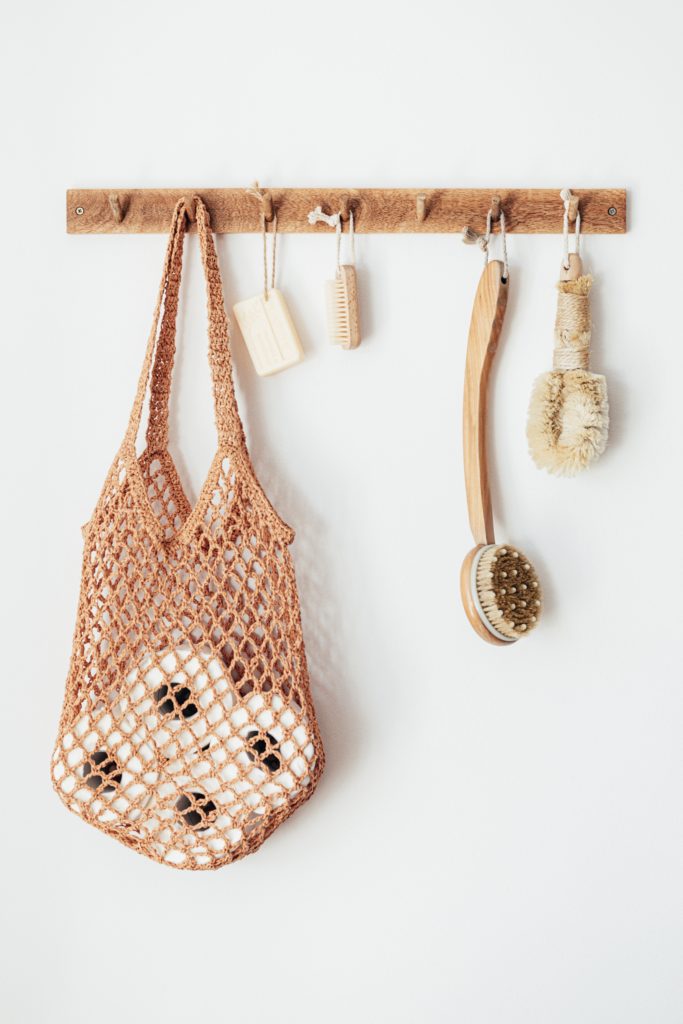Cleaning and Organizing Tips from Local Pros
By Lisa Gregory
The world outside may be a mess right now, but her home is not. And Angelea Silver of Gettysburg takes comfort in that.
“It’s just a great feeling knowing that our home is in order when the world is not,” says the stay-at-home mother of two. Silver prides herself on keeping her home clean and organized normally, but she has been even more committed to doing so since the pandemic began.
She is not alone.
With the onset of the pandemic, more people are spending time at home and as a result are spending more time looking at it, says Judith Fuller, a professional organizer from Taneytown, Md.
And they are not always liking what they see. This has led to a wave of deep cleaning and decluttering in American households.
Forget spring cleaning—this is pandemic cleaning.
Local experts—such as Fuller, who has been a professional organizer for nearly two decades; Carol Leaman, who owns Good Life Cleaning Services with nearly 300 clients; and John and Rose Lansing, owners of Redbud House with its array of cleaning tools and other accessories—offer tips on keeping a cleaner and more organized home.

“I would suggest it be done twice a year, say in the spring or fall,” says Leaman of spring or deep cleaning. “Your walls, windowsills, window frames, door frames—all that needs to be wiped down. Bannisters and railings on the stairs need to be wiped down. And you also need to pull out the furniture, sofas and couches, from against the wall. All that needs to be cleaned.”
But she acknowledges deep cleaning can be daunting. “It’s easy to get overwhelmed,” says Leaman, whose business has been busier than ever and practices COVID-conscious criteria. “It’s good to set a goal of a room or a task at a time, then check it off as you go along.”
Given the battle against germs and viruses, Leaman warns against the use of harsh chemicals, such as bleach. “Some of those products just have too strong of a chemical mix for humans to breathe,” she says.
If using a chemical cleaning agent, Leaman suggests using only a small amount. “People tend to want to use so much that you can really smell it, and they shouldn’t,” she says. “It really is best to use a cup per bucketful. It’s a very small amount that you need.”
Leaman also makes her own disinfectant spray. Easily found on the internet, the recipe calls for water, white vinegar, and alcohol. To make the concoction more pleasant to the nose, she suggests adding some drops of essential oils, such as lavender, jasmine, or eucalyptus.
As the adding of pleasant scents might suggest, sometimes how we approach the cleaning process can make all the difference.
“My sister cleans every Saturday,” says Rose Lansing of Redbud House. “She puts on lively music and dances around the house as she cleans it.”
In other words, if it must be done, why not try to enjoy it? Many of the items that Redbud House offers to do just that. Having the right tool helps, such as cleaning brushes in an array of styles, shapes, and sizes for various cleaning tasks.
“Having something different on hand, a different kind of brush, can build your interest back into getting into cleaning again,” says John Lansing.
The bamboo ring brush, which is made by Full Circle and used to clean fruits and vegetables, is especially popular with customers, he says.
“It’s a good useful shape,” he says, “but it looks nice sitting on your counter where it’s easily within reach.”
“Decorative but functional,” explains Rose Lansing.
Another plus is that the brush is environmentally friendly, made from not only bamboo but recycled plant fiber and plastic bristles. For many customers, earth friendly matters.
Like non-paper towels, a growing trend that no doubt became more popular during the early days of the pandemic when traditional paper towels were scarce. Instead, a reusable Swedish dishcloth made by Skoy is a good alternative, say the Lansings.
“If you are just using it to wipe down counters, it can take the place of a couple of rolls of paper towels,” says John Lansing. “That means fewer paper towels that you have to buy and throw away.”
“You can throw it in the dishwasher daily or every couple of days, or it can go in the laundry with your kitchen towels,” adds Rose Lansing.
With its bright colors and cheerful designs, the Swedish dishcloth also looks nice sitting out on the counter readily within reach as cleaning demands.
But the Lansings also suggest the opportunity for the joy of distraction during these difficult times, such as the lure and purchase of a pretty serving bowl. It’s something small, but emotionally rewarding too.
“If you have a choice of putting that homemade hummus in a Tupperware container or a pretty little blue and white ceramic bowl, which would you prefer to do?” asks Rose Lansing.
Everything in its Place
But that’s if you can find that serving bowl or plastic container and its matching lid hidden in the black hole of clutter that can be the kitchen cabinet or drawer.
And that’s where Fuller and her organizational expertise comes in. The first rule: don’t become overwhelmed by the decluttering task before you. “If you just see the whole picture it can be too much,” says Fuller.
So to get over that initial hump much as Leaman suggested with cleaning, start with a room, preferably one frequently used, or a particular task. Pick items off the floor, for example. “If you have a clear floor, it’s amazing how much cleaner your whole room looks,” says Fuller. “Once you can see something happening, that is a great incentive.”
Fuller also recommends making piles as you begin the task of sorting through items. “One to keep, one to go, and this is trash,” she says. “I find that when you actually see the trash—the stuff—you are like ‘Why do I have this empty bag?’ You get the trash out, you can relax a bit. People will say to me, ‘Oh that wasn’t as bad as I thought it was going to be.’ And they can see a difference.”
But as one makes piles and divvies up items, beware of the bins, says Fuller.
“A lot of people think ‘I need more containers’ or ‘I need more bins,’” she says. “But they forget that when they start filling up baskets or tubs or bags then they forget what is in there. I think it’s really important that you be able to see what you have, especially when you’re talking about a closet where you can close the door.”
And the clothes in those closets? “If you haven’t worn it in a year you probably aren’t going to,” she says.
So once you have deep cleaned and decluttered, how do you keep it that way?
“It’s really about creating habits for yourself,” says Fuller.
Both Fuller and Leaman highly suggest tidying up as you go along. “You will see the people who are clean always put everything away,” says Fuller. “They use a dish and after they use it, they immediately rinse it off and put it in the dishwasher or wash it and put it away.”
Those little day-to-day tasks can make a big difference. “Every little bit helps,” says Fuller. “A small victory is still a victory.”
Good Life Cleaning Services
1564 Carrolls Tract Road, Orrtanna
717-642-3711
www.goodlifecleaningservices.net
Redbud House
28 Baltimore St., Gettysburg
717-624-3147
www.redbudhouse.com
Donate It!
Adams Rescue Mission
2515 York Road, Gettysburg
717-334-7502
www.adamsrescuemission.org
Community Aid
Locations and bins across central Pennsylvania
717-516-8235
www.communityaid.org
The Dos and Don’ts of Donating
You’ve cleaned, you’ve decluttered, and now you’re ready to donate items you no longer want or need. What should you know?
Heidi Acker, promotion and development director for the Adams Rescue Mission, shares how to make the most of your donations and what organizations such as hers are looking for in terms of donations.
Do sort and organize your items. “Taking the threads from all your different sewing notions and putting it in a big Ziploc bag, or taking your beads for jewelry making and putting that in its own Ziploc bag is super helpful,” she says.
Don’t donate damaged clothing. “If the knees are blown out in your kid’s jeans, they are not helpful to us,” says Acker.
Don’t donate dirty items. “Our first rule of thumb is clean,” says Acker.
Do donate everyday use items. “Look around your kitchen,” she says. “Pots and pans, silverware. The things you use every single day. That would be what someone else needs and uses every single day.”
Don’t donate car seats or booster seats. “It’s a liability issue,” says Acker.
Do repair damaged items before donating them. “If someone has a dining room table and it just has that one wobbly leg, we ask that before you donate it, fix it,” she says.
Don’t donate medicine. “We often get insulin or
insulin syringes and blood sugar testing supplies or bags of old prescription medication,” says Acker. “They must be prescribed; therefore, we cannot accept them.”
Do donate medical supplies. “Wheelchairs, walkers, shower chairs, elevated potty seats we can take,” says Acker. “We don’t take really big medical supplies like hospital beds.”
Don’t donate personal items. “Family photo albums, social security cards, expired drivers licenses, death and birth certificates, yearbooks, diplomas, etc. should not be donated,” says Acker. “We usually assume that these were donated accidentally and try to get in touch with someone.”
Acker says to give with a sense of purpose. “From a donor perspective, you don’t always know what the next step is going to be for your stuff. But it could really prove to be life changing for the next person.”




